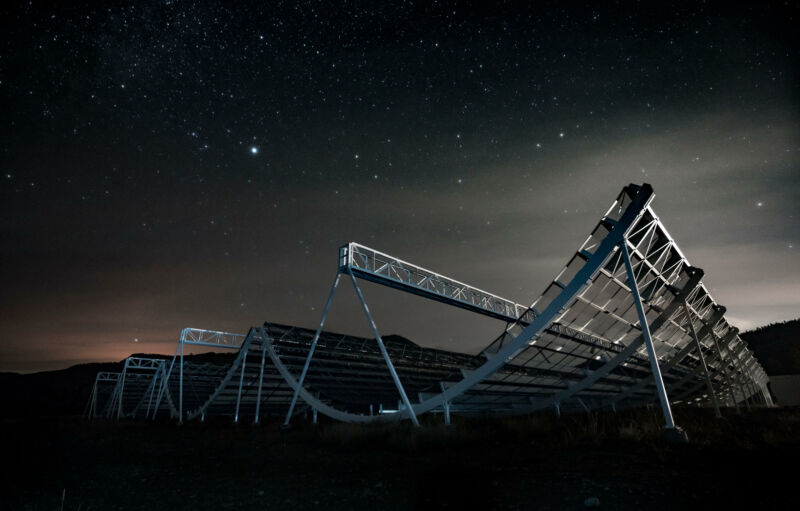

Did we already observe our first “blitzar”?
source link: https://arstechnica.com/science/2023/03/fast-radio-burst-may-point-to-the-first-blitzar-weve-observed/
Go to the source link to view the article. You can view the picture content, updated content and better typesetting reading experience. If the link is broken, please click the button below to view the snapshot at that time.

A big crunch —
Did we already observe our first “blitzar”?
Radio burst may come from a neutron star that's too big to live.
John Timmer - 3/28/2023, 3:34 PM

By combing through a collection of data, researchers may have discovered evidence that we've already observed the first "blitzar," a bizarre astronomical event caused by the sudden collapse of an overly massive neutron star. The event is driven by an earlier merger of two neutron stars; this creates an unstable intermediate neutron star, which is kept from collapsing immediately by its rapid spin. In a blitzar, the strong magnetic fields of the neutron star slow down its spin, causing it to collapse into a black hole several hours after the merger.
That collapse suddenly deletes the dynamo powering the magnetic fields, releasing their energy in the form of a fast radio burst. The researchers who performed the analysis suggest that this phenomenon could explain the non-repeating forms of these events.
Too big to live
How big can a neutron star get before it collapses into a black hole? We don't have a good answer, in part because we're not sure what happens to the bizarre forms of matter inside one of these massive objects. We don't even know if the neutrons that give the star its name survive or fall apart into their component quarks. It's one of those annoying questions where the answer includes the phrase "it depends."
AdvertisementThe big thing it depends on is how fast the neutron star is spinning. A fast enough spin can counteract the pull of gravity on the neutron star's outer layers, keeping something that's too heavy to survive around for a bit. If the spin slows down, the whole thing will be rapidly crunched into a singularity. The simplest way to slow one of these stars down is through its magnetic field, which will interact with charged particles in the environment, creating a drag on the object's spin.
These are the conditions that take a neutron star merger and create a blitzar. If neutron stars are heavy enough, their merger will create an object that's above the mass limit that should cause it to collapse into a black hole. But the collision is also likely to set the object spinning fast enough that it cannot collapse. Their churning, superfluid interiors can also host a dynamo that supports an intense magnetic field, potentially making the object a magnetar but definitely slowing its spin. The dynamics of this balance are such that the blitzar should occur within hours of the neutron star merger.
Once the collapse happens, the dynamo that created the magnetic fields vanishes along with the rest of the neutron star. There's a lot of energy wrapped up in that field, and the loss of the neutron star releases it in a process that the new paper refers to as "shedding the magnetosphere." That burst of energy is something we can potentially detect.
Page:
Recommend
About Joyk
Aggregate valuable and interesting links.
Joyk means Joy of geeK